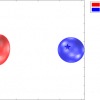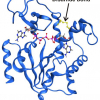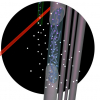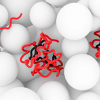Magnetic Resonance News
Playing classical music to crocodiles in a MRI scanner produces patterns similar to those identified in mammals and birds, indicating that fundamental neuronal processing mechanisms of sensory stimuli formed early in evolution.
Applications for this prestigious award are invited by 30 November 2018.
A new study using magnetic resonance spectroscopy provides insights into the biochemical mechanisms by which Tai Chi may provide both physical and psychological benefits.
A collaboration between European scientists has demonstrated that removing surface spin defects dramatically reduces the charge noise of quantum devices such as sensors and computers.
Researchers at the Universities of Kyoto and Tokyo in Japan have developed a new method of light detection for NMR by up-converting radio-frequency signals into optical signals.
Scientists at the Karlsruhe Institute of Technology (KIT) have succeeded in enhancing the sensitivity of NMR measurements in very small spaces using Lenz lenses that focus magnetic flux.
Bruker and their partner Diagnosticum are forming the Hungarian Wine Consortium to develop a new programme to authenticate and identify Hungarian wines.
Achema 2018 is inviting contributions to the Achema Congress and the PRAXISforums; deadline 22 September 2017.
A cooperation between Messe München India and the Indian Pharma Machinery Manufacturers Association (IPMMA) will collocate events jointly representing 600+ global and Indian companies.
The structures and functions of a transient enzyme state have been mapped for the first time using NMR spectroscopy and X-ray crystallography.
Scientists at the University of Sheffield have used NMR spectroscopy to examine the molecules in live sperm, and early data suggests it could discriminate between populations of good and poor sperm. Thus, it might be useful to improve diagnosis of sperm problems because it is non-destructive, so the sperm examined could be used in fertility treatments after analysis.
Salmon is one of the most popular edible fish of all. Shops sell fish caught in the wild, but their main produce is salmon from breeding farms, the effluent from which can pollute rivers, lakes and oceans. German and Chilean scientists have used fluorescence measurements, high-resolution mass spectrometry and nuclear magnetic resonance spectroscopy to answer this question.
Lewis E. Kay is to receive a 2017 Canada Gairdner Award for his contributions to the field of biomolecular NMR spectroscopy.
numares AG and Oxford University are collaborating to develop an nuclear magnetic resonance (NMR)-based in vitro diagnostic (IVD) test to improve therapeutic decision making for patients with multiple sclerosis (MS). This is based on research conducted at Oxford to differentiate MS patients by metabolic biomarkers using NMR spectra. numares will provide its Magnetic Group Signaling® (MGS®) technology to Oxford to advance research toward the creation of a non-invasive diagnostic test.
The 2017 Pittsburgh Spectroscopy Award has been made to Edward I. Solomon.
THz laser system has helped Dresden High Magnetic Field Laboratory extend the frequency range of ESR techniques.
NMR spectroscopy has shown a molecule self-assembling into different forms passing from solution state to solid state and back again.
A superconducting insert coil made from a copper-oxide-based ceramic, YBCO, has raised the magnetic field achievable to 25 Tesla.
New method allows hyperpolarised xenon gas, to be dissolved into minute samples of substances without disrupting their molecular order during NMR spectroscopy.
The protein α-synuclein plays an important role in Parkinson’s and other neurodegenerative diseases. Although a considerable amount is known about the structure of the protein within the Parkinson’s-typical amyloid deposits, nothing was known about its original state in the healthy cell up to now. High-resolution nuclear magnetic resonance and electron paramagnetic resonance spectroscopy have helped to visualise the protein in healthy cells.















